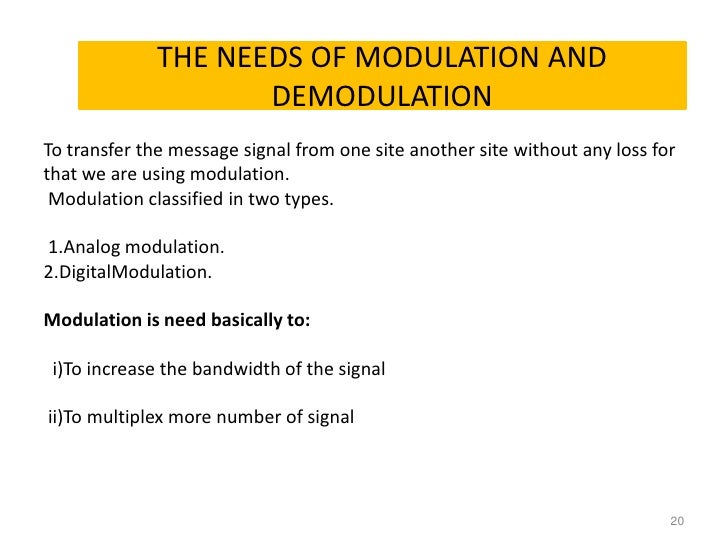Needs for Modulation

NEED FOR MODULATION
1) TO REDUCE THE ANTENNA HEIGHT
2) TO MULTIPLEX THE MORE NUMBER OF SIGNALS
3) TO REDUCE THE NOISE & DISTORTIONS
4) TO NARROW BANDING THE SIGNAL
5) TO REDUCE EQUIPMENT COMPLEXITY
In simple terms, modulation is required to transmit signals from variuos sources simultaneously over a common channel by means of ‘multiplexing’.For ex., the bandwidth of speech signals is 3.3KHz.,and transmitting N no.of speech signals simultaneously each of BW 3.3KHz causes interference.Hence,to overcome this problem, each speech signal is modulated onto one of N carriers of frequencies 60KHz,64KHz,68KHz etc…

Needs for Modulation
The aim of digital modulation is to transfer a digital bit stream over an analog bandpass channel, for example over the public switched telephone network (where a filter limits the frequency range to between 300 and 3400 Hz) or a limited radio frequency band.
The aim of analog modulation is to transfer an analog lowpass signal, for example an audio signal or TV signal, over an analog bandpass channel, for example a limited radio frequency band or a cable TV network channel.
Analog and digital modulation facilitate frequency division multiplexing (FDM), where several low pass information signals are transferred simultaneously over the same shared physical medium, using separate bandpass channels.
The aim of digital baseband modulation methods, also known as line coding, is to transfer a digital bit stream over a lowpass channel, typically a non-filtered copper wire such as a serial bus or a wired local area network.
The aim of pulse modulation methods is to transfer a narrowband analog signal, for example a phone call over a wideband lowpass channel or, in some of the schemes, as a bit stream over another digital transmission system.

